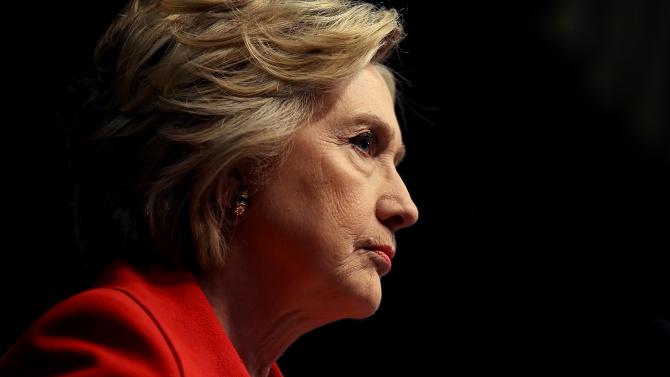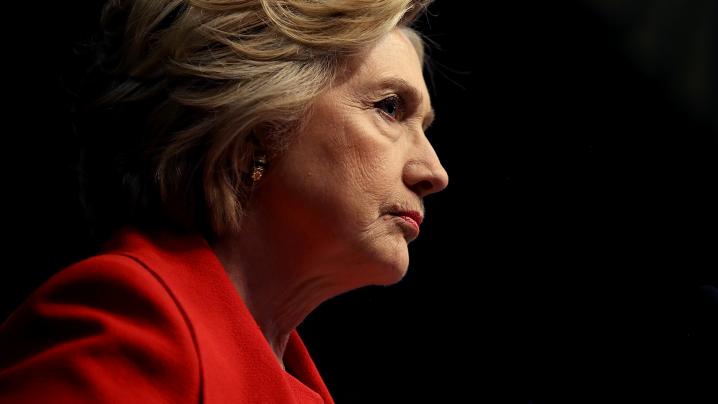[ad_1]

Democratic presidential candidate Hillary Clinton
Justin Sullivan/Getty Images
What happens to lofty campaign promises after the candidate is no longer a front-runner? Do they dry up like a raisin in the sun? I imagine that the supporters of Vermont Sen. Bernie Sanders who believe in his promises about prison reform have the same question. As former Secretary of State Hillary Clinton continues to win in key states, even the most loyal Sanders supporter has to be concerned about what his loss would mean for ending mass incarceration.
Throughout his campaign, Sanders has been unwavering about his plan for prison reform. He even boldly declared that if he were elected president, by the end of his second term, the U.S. would no longer be leading the world in incarceration rates. If you know someone who is incarcerated, have been incarcerated yourself or pay taxes, this affects you as well as the reported 2.2 million people incarcerated in the United States being held at the cost of $39 billion (pdf). Yet while you can add up what it takes to run the world’s largest carceral state, the social and emotional implications can’t be quantified.
The structural and emotional impact that mass incarceration has had on communities of color is immeasurable. How do you add up the cost of years stolen from the lives of people who received excessive sentences because of biased laws and structural racism? What is the formula to calculate the emotional toll that incarceration has on families?
Clinton, like every other candidate, has discussed prison reform. However, will this discussion translate into action if she is elected? While no one can say for certain what Clinton will do to address prison reform, we can take a look at how some of her decisions on mass incarceration have impacted 2.2 million behind bars and contributed to that $39 billion to run them.
Which comes first—societal changes or legislative change? Chicken or egg? Do changes in society affect how laws are created and imposed, or do legal changes affect how we live in society? If you are familiar with the societal conditions of the late ’80s and early ’90s, you know that the answer to those questions is a gray one. It’s blurred and layered. Within those layers, and even part of them, is the 1994 Violent Crime Control and Law Enforcement Act.
In the late ’80s and early ’90s, the crack cocaine epidemic ravaged communities of color. The devastating domino effect was fast and strong. Families were broken, drug-addicted children were born and there was a huge surge in drug-related crimes. There was also a collapse of community structure. Hindsight (and Tre’s dad from Boyz in the Hood) made it clear that this collapse was precipitated by malignant policy imposed to “address” these “problems.”
During that time, people in power rarely addressed the fact of how and why drugs were being shipped from foreign countries into communities of color. The legislative response was to become “tougher” on crime. Hence the birth of what is commonly called the 1994 crime bill, pushed by then-President Bill Clinton. The bill was the largest crime bill in the history of the U.S. Components of the bill included the elimination of inmate education, an increase in money allocated to build prisons, longer sentences for drug offenses, the expansion of the death penalty, the creation of the “three strikes” law, and the authorization of adult prosecution for those 13 years of age or older for certain crimes.
It is common knowledge that then-first lady Hillary Clinton was a great supporter of this bill and lobbied Congress to help ensure that it was passed. In her attempt to gather public support, she made speeches in which she referred to children as “superpredators,” a term coined by then-Princeton professor John Dilulio to describe “urban” (i.e., black and brown) youths, labeling them as criminals. Clinton is often questioned about this and has since said that she shouldn’t have used those words. But she also still defends some aspects of the 1994 crime bill, arguing that it also supported victims of domestic violence by making it difficult for convicted offenders to obtain legal firearms.
Clinton has tried to put distance between herself and her “superpredator” past by taking a different approach. Today she is verbally declaring a less “tough on crime” approach than the one she once championed, and she now advocates expanding diversion programs (like drug courts), co-sponsoring reforms that eliminate mandatory-minimum sentences and co-sponsoring legislation to help end racial profiling.
This progress is notable. However, will it continue if she is elected president? According to reports, part of Clinton’s presidential campaign is funded by private-prison lobbyists. Not the best of signs.
While Clinton’s changes on prison reform are welcome, they still don’t go far enough to address the root causes of mass incarceration. Real prison reform must occur on several levels, addressing the school-to-prison pipeline, economic inequality, institutional racism and factors that lead to recidivism. A presidential candidate serious about prison reform cannot ignore those elements.
Considering Clinton’s wavering and questionable position on this issue, it is easy to have concerns. However, I am comforted in knowing that history tells us that real reform is in the power of the people. Perhaps it was the dreamer in me that was excited about Sanders, a presidential candidate openly prioritizing a reduction in incarceration rates. It is this same dreamer who wonders what will happen now that Clinton is most likely the Democratic nominee. I guess that is the $39 billion question that will be answered after November.
[ad_2]





















